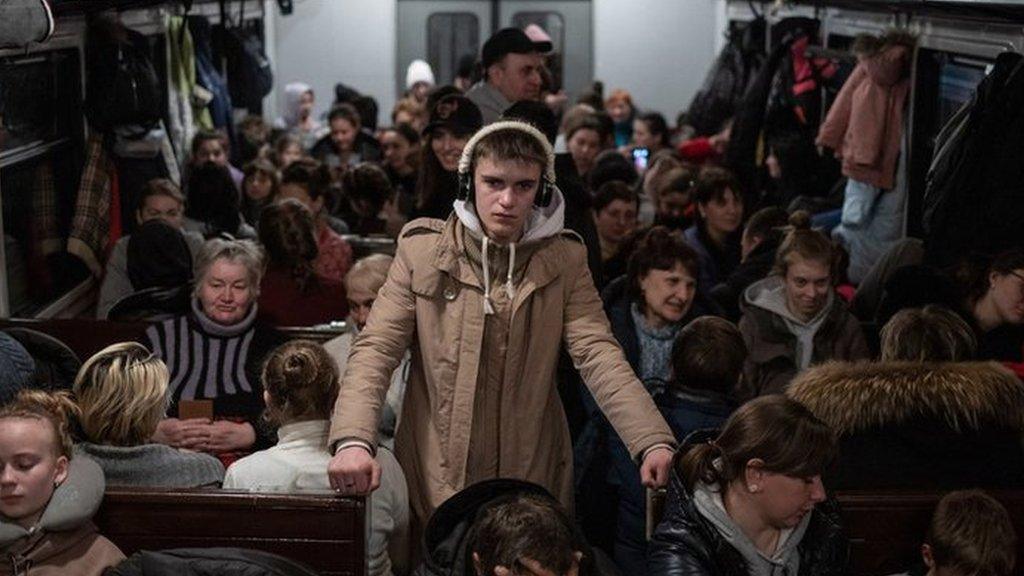Somerset lockdown 'Slow Time' photography exhibition opens
- Published
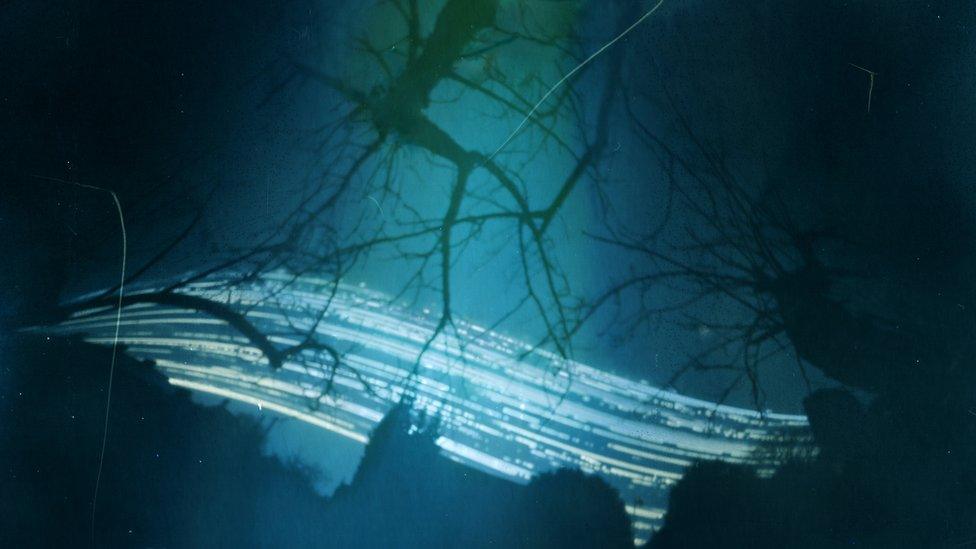
The 150 pinhole cameras were scattered around Somerset, including Glastonbury, Taunton and Minehead
An exhibition featuring 'Slow time' photographs during the lockdowns of 2020 and 2021 has opened.
Led by artist Janette Kerr, the six-month project featured 150 pinhole cameras scattered across Somerset.
John Gammans, who worked on the project, said the cameras made out of recycled drink cans, gave a "very unique snapshot of what was going on in Somerset at that time".
The exhibition will run until 21 May at East Quay in Watchet.
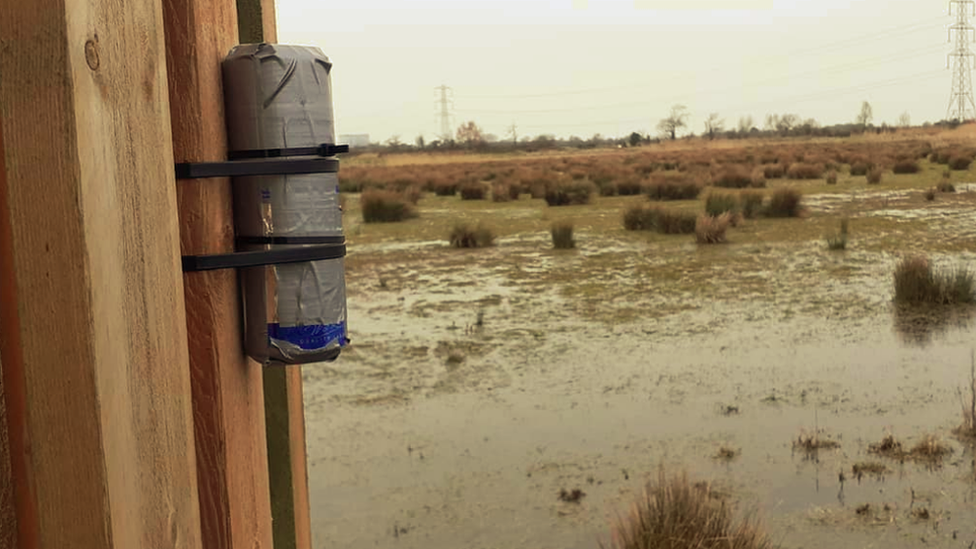
The cameras were made out of recycled drink cans and featured light-sensitive materials
The cameras featured light-sensitive material, eventually creating long-exposure photographs of the Somerset landscape.
Each camera can captured light waves as they travelled through the air, passing through a pinhole and then onto black and white photographic paper.
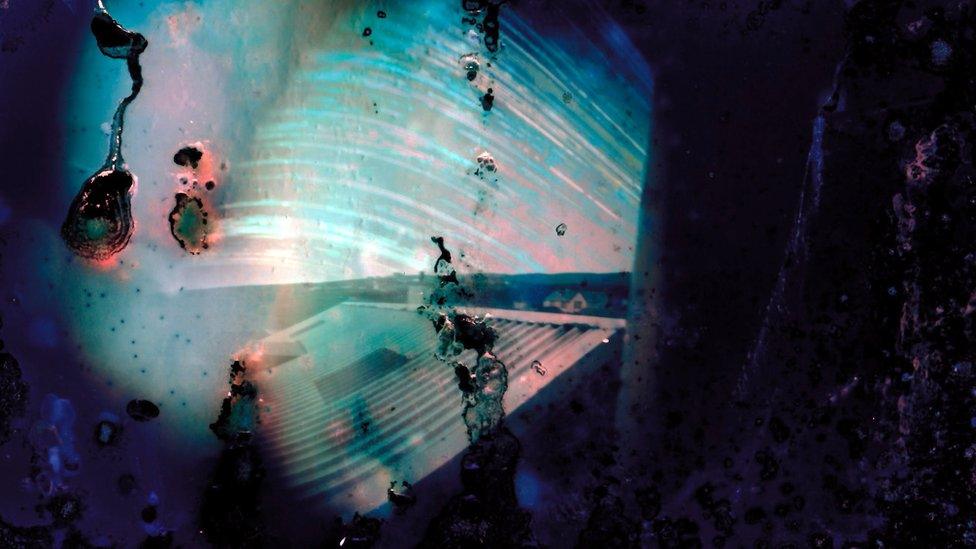
The project started after Janette Kerr gifted her friends and neighbours with the pinhole cameras for Christmas
The photos were then processed months later by scanning the paper, uploading it onto a computer and then manipulating it using a photo editor.
Dr Kerr said the idea first started after she made and gifted her friends and neighbours pinhole cameras for Christmas in 2020.
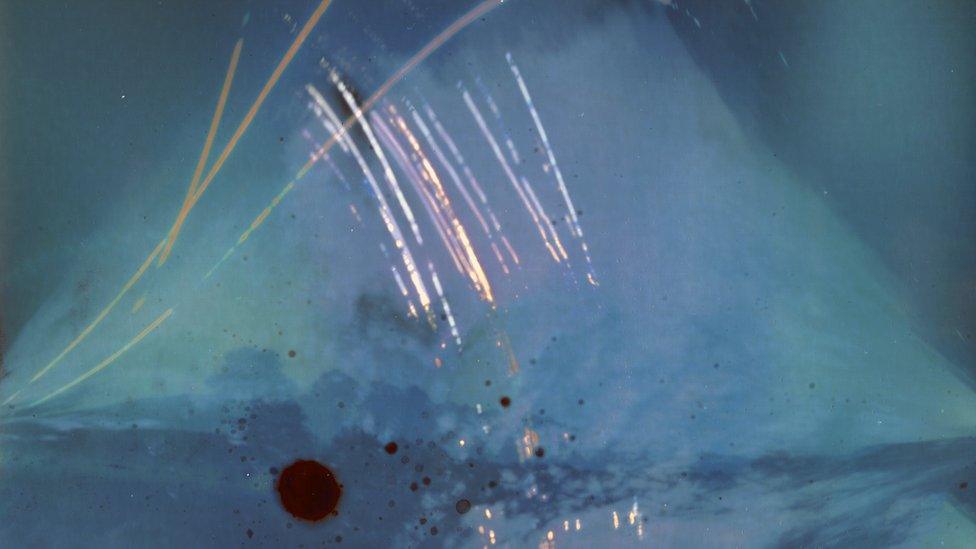
The pinhole cameras were in place for 6 months before being processed months later by scanning the black and white photography sheets into a computer
"Everyone got excited about it and then I happened to mention it to Somerset Art Works and they asked me if I could extend it to the whole of Somerset," she said.
Eventually over 100 participants took part, with each camera pointed at a different viewpoint, in places including Glastonbury, Minehead, Frome, Taunton and Stoke Sub Hamdon.
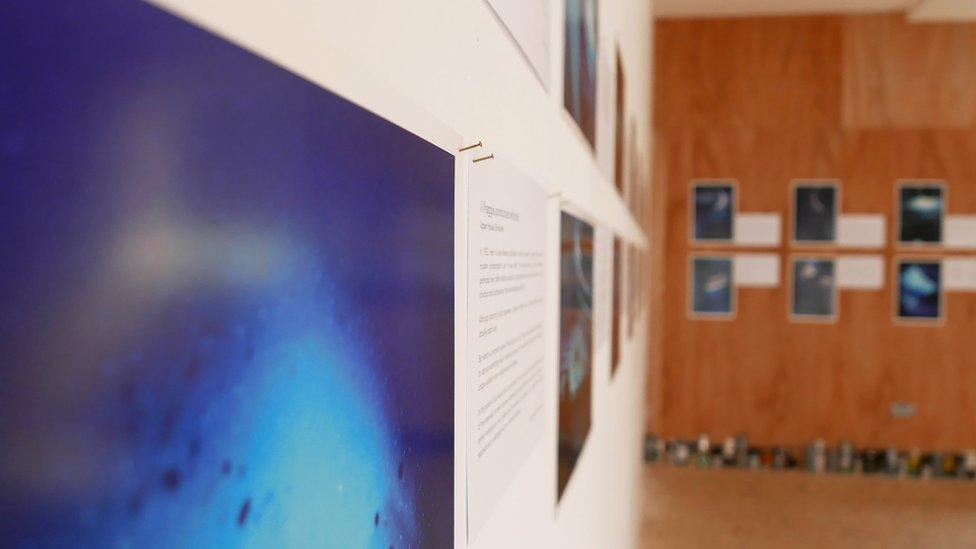
The exhibition will run at East Quay in Watchet until 21 May
"I think that because it was lockdown and because people weren't travelling so much, the emptiness of the landscape reflected that time because there was an absence of people," she added.
While 170 images were captured and will be shown on screen during the exhibition, only 36 were selected to be printed, with Dr Kerr asking those that were chosen to write something to accompany their image - from what their experience of lockdown was to how the image made them feel.
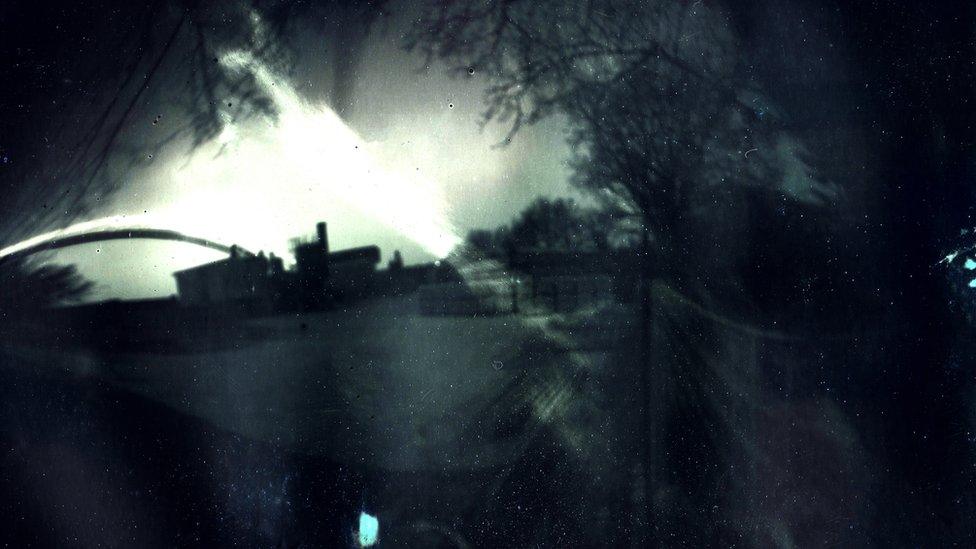
Calling them "little time cameras", John Gammans said they managed to record their own perception of time
Mr Gammans, who works as an artist and helped coordinate the project said it was "lovely to see people's faces light up with curiosity on how it was all going to work".
"The images themselves provide a really unique viewpoint - given the fact it was a very odd time where you could go out your front door and not hear cars, not see people, people were more aware of birdsong, you noticed how clear the sky was - it was a very very strange time and the little cameras encapsulated that perfectly," he said.
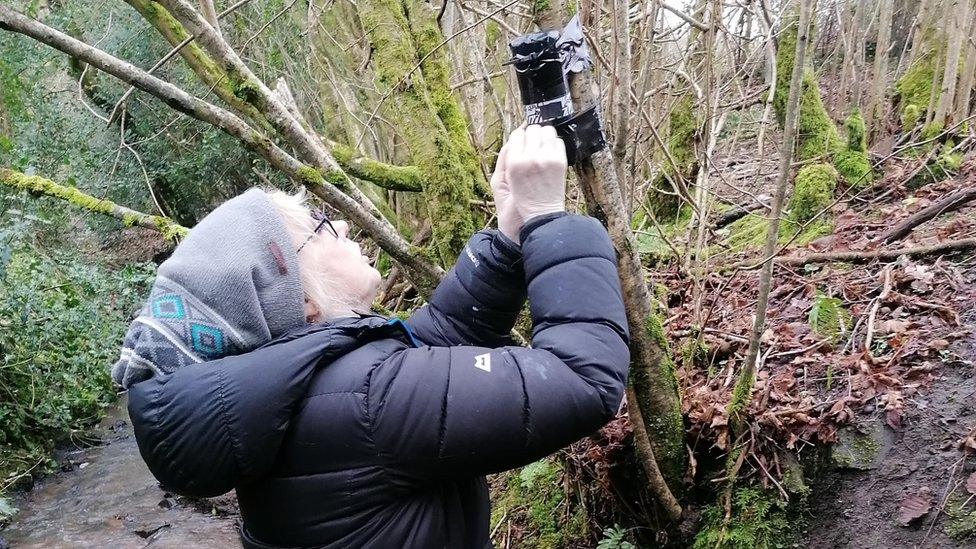
Janette Kerr said the images reflected "the emptiness of the landscape" during lockdown
Calling them "little time cameras", Mr Gammans said they managed to record their own perception of time.
"We don't sort of notice the movement of the sun and we also take for granted everything moving around us," he said.
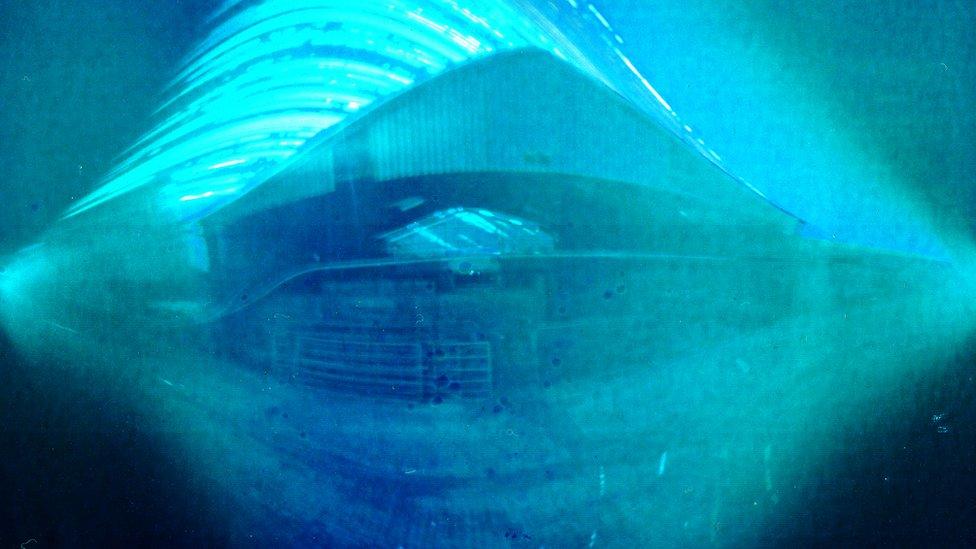
More than 100 participants took part in the art project
"I do equate it to if a tree had any perception of what's going on around it."
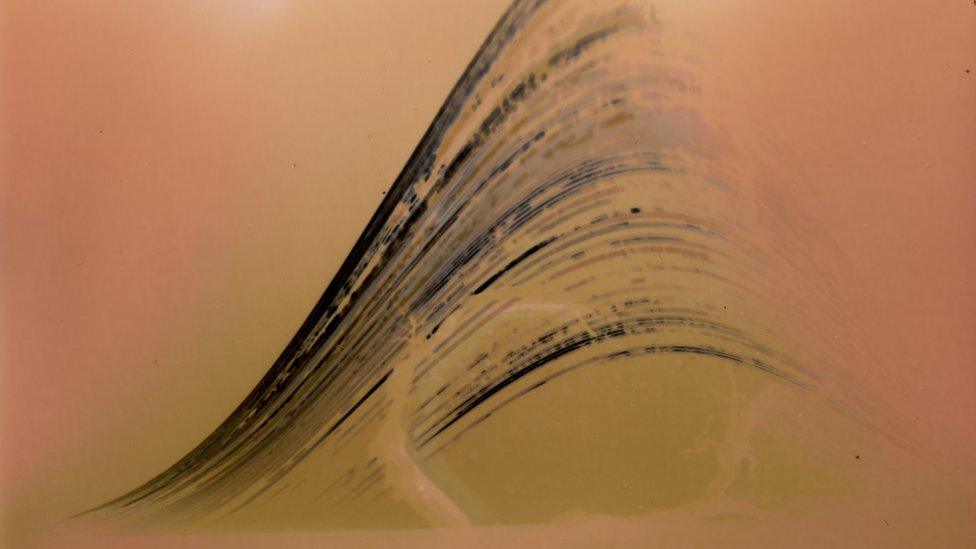
John Gammans said it was "lovely to see people's faces light up with curiosity on how it was all going to work"

Follow BBC West on Facebook, external, Twitter, external and Instagram, external. Send your story ideas to: bristol@bbc.co.uk , external
Related topics
- Published2 May 2023
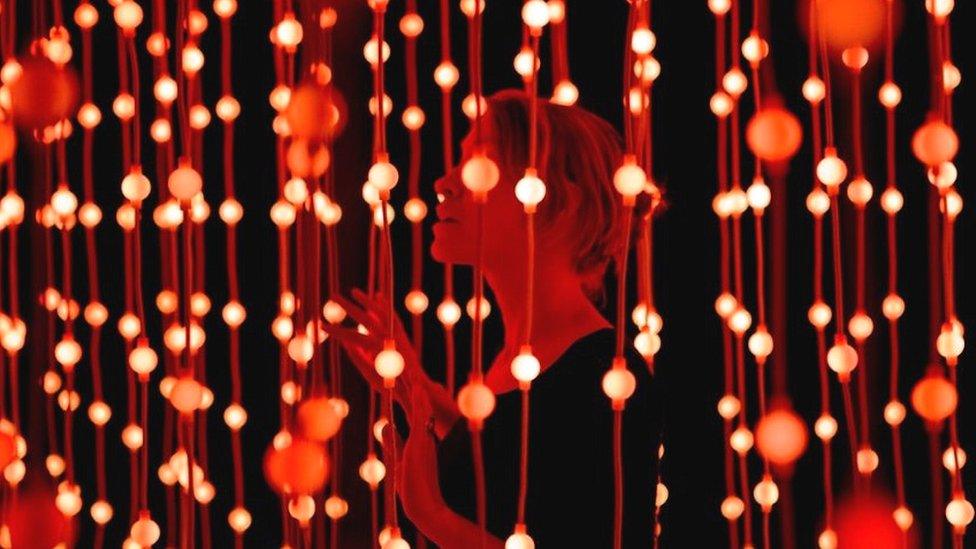
- Published29 March 2023
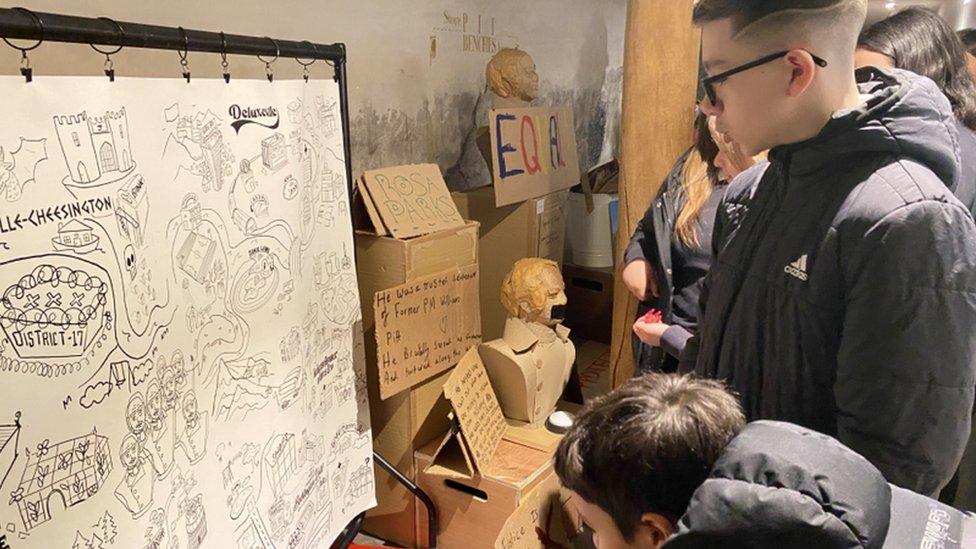
- Published24 February 2023
